ISR is presenting the paper in three parts (in this and the next two editions), in which the author gives an overview of this essential method of joining ropes, reports on experiences with the geometry of the splice and treats the influence of the splice on rope life.
1 Introduction
Splicing is a very old means of joining ropes and even today is still the only method of rope joining which creates an endless loop. For quite some time now, the lengths of the tucked tails in a long splice as well as the overall length of the splice have been standardized so that the functionality of a rope splice can be ensured.
The specifications contained in the applicable standards have been defined primarily with respect to the requirements that arise under the typical operating conditions found in ropeways, which must ensure safe and proper functioning and that the rope connection can never slip apart.
These must also include the requirement that a long splice must not produce a noticeable thickening of the rope due to the detachable clamps that are used. It is also important to ensure that a suitable service life is achieved for these connections. The more frequently spliced endless-loop ropes are used in urban installations, the more importance must be attached to the achievable and implementable service life.
Various existing, older studies (Overlach 1931) have treated the aspect of adequate length of the tucked tails as well as the necessity of preventing bulge formation and the reduction of the radial forces or holding forces on the tucked tails. It is not an objective of this paper to reexamine the good quality work or to expand it to account for the situation faced today (thicker ropes with multi-layered stranded designs). Instead, the paper focuses on identifying and evaluating the most important points that are of greatest significance for achieving a desirable service life.
When we consider the current specifications for splicing, the total length of a long splice has remained about the same over the last 80 years at ≥ 1200 x d (d = nominal rope • in mm). In contrast, however, the tucked tails have tended to become shorter in some countries. In consequence, the current minimum length of the tucked tails is 60 x d according to the harmonized specifications of EN standards. In fact, in earlier times in the USA, the applicable regulations called only for a minimum of 30 x d. Before 2003 in Switzerland, a limit value of 50 x d was called for as the minimum length for the tucked tails. Based on experience with these values, as some splices of these types are still in service, it can be shown that the current standard specifications function well under normal conditions when applied in appropriate splicing systems.
Furthermore, it must be borne in mind that the manner in which a long splice is fabricated varies depending on the manufacturer making the splice, the different wrapping materials for the tucked tails as well as the manner in which the splice is executed (tucked tail length, knot type, type of twisting, etc.). It is essential that these important aspects be considered in the design of a long splice, which makes it impossible to make generalized evaluations without specific knowledge of the splicing system.
When the long splice is considered in terms of service life, a factor that is continually growing in importance in urban installations, then special attention must be given to the knot or the region of the tuck tail ends. These are the primary areas that experience the fatigue that limits service life.
Consequently, a number of questions arise which are essential for the design of a long splice that offers proper function and economy but also long service life.
- What factors influence the proper function of a long splice?
- Are the currently applicable regulations / standards / certification systems adequate to govern safe splice connections?
- What factors influence the service life of a long splice?
- Will it be necessary in the future to design and calculate long splices for specific applications or facilities?
- Where do the limits really lie with respect to the length of the tucked tails as well as the overall length of a long splice?
In the following sections, an attempt will be made to provide information and facts to answer these questions.
1.1 The history of ropes and the long splice
The term “splicing” means joining two ropes together.
The history of ropes is truly impressive. Even today, most ropes still have a structure similar to that used more than 2,000 years ago.
Ropes continue to play an important part in many typical situations of our daily lives. They continue to be an indispensable part of any system in which it is necessary to divert tensile forces via rollers or pulleys.
Rope makers' guilds existed for centuries and still today, thousands have this trade as a part of their name. Rope makers learned to make ropes using natural and synthetic fibers as well as wire ropes and was able to fabricate them to suit their customers’ needs as well as install and maintain them. Today, however, the number of rope manufacturers is dramatically smaller and most of these are specialists for a very limited range of applications. Consequently, training to become a rope maker is often only possible in the textile industry and only at a very few locations when viewed from a global perspective. It can also be said with certainty that today’s rope maker concentrates primarily on the fabrication of ropes, and the work of splicing is performed by a specialist splicer (image 1).
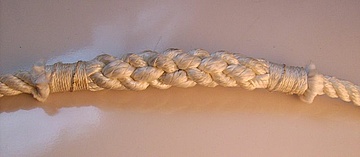
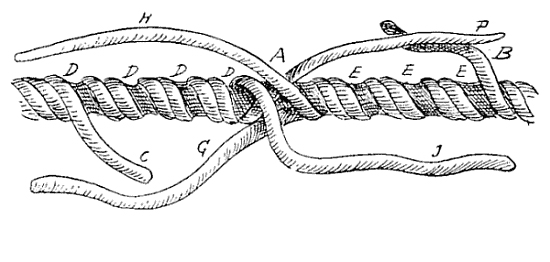

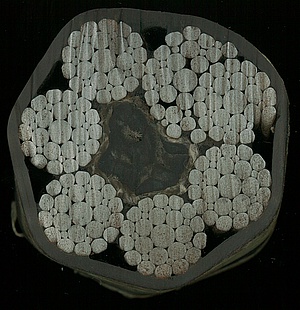
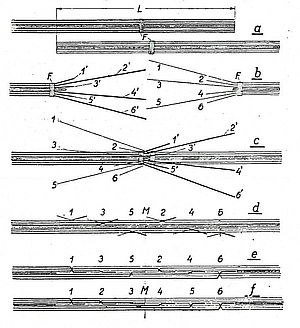
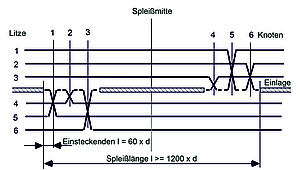



![[Translate to English:] (c) Doppelmayr](/fileadmin/_processed_/b/3/csm_85-ATW_Stechelberg-Muerren_Lauterbrunnen_CHE_001_6442c0520d.jpg)








